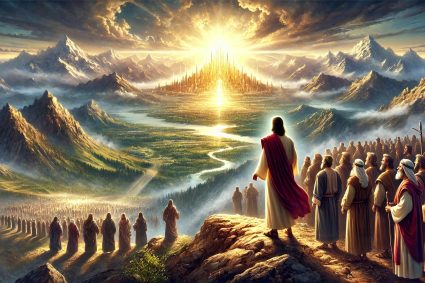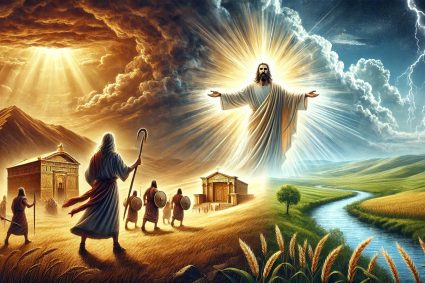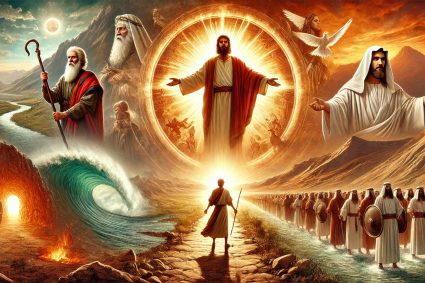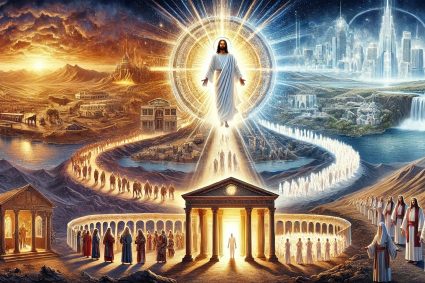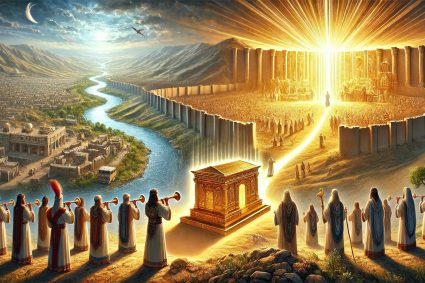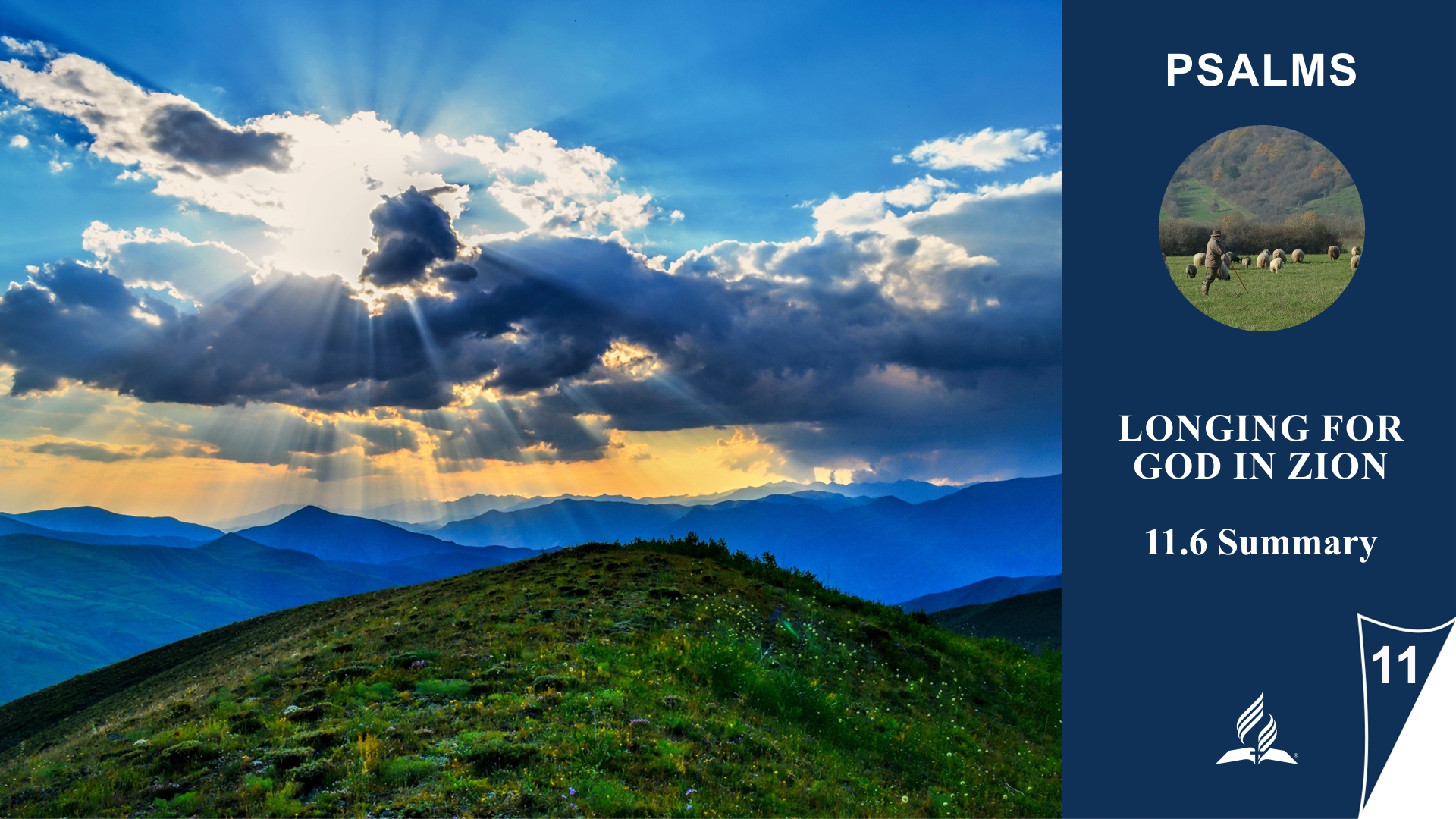


11.6 Summary
Hope in God in Zion: An Overview
Lesson 11 revolves around the longing for God and the search for a place of rest and security. By examining Psalms 87, 46, and 125, we learn that Zion is not only a physical location but also a spiritual reality symbolizing the desire for communion with God and the longing for peace and security.
In Psalm 87, Zion is described as the chosen and beloved place by God, where His presence resides and true worship occurs. Zion represents the universal community of believers and the desire to be close to God.
Psalm 46 depicts a world in turmoil but also the steadfastness and strength that God provides to believers. Despite life’s challenges, those who trust in God can find security and peace, much like Mount Zion, which stands firm and unshaken.
In Psalm 125, the righteous are tempted when they see the seemingly successful wicked. Yet they are encouraged to remain steadfast in faith and rely on God, even when they do not understand everything. Mount Zion serves as a symbol of their steadfastness and immovability.

The connection between Lesson 11 and our daily lives and faith lies in the challenges we experience daily and the search for peace, security, and a deeper connection with God.
In our daily lives, we often face challenges, uncertainties, and turbulence. We struggle with personal issues, societal injustices, global crises, and much more. In these moments, we long for a place of peace, stability, and security.
Our faith offers us hope and comfort amid these challenges. Similar to how the Psalms teach us that Zion is a place of God’s presence, peace, and steadfastness, through our faith, we can find security and solace. By holding onto God and trusting in His promises, we can find peace in our hearts, even when the world around us is in turmoil.
The lesson encourages us to remain firm in faith and cling to God, even when faced with temptations or drawn to the ways of the wicked. Through regular prayer, studying Scripture, and communing with other believers, we can be strengthened and learn to trust in God, even in the most difficult times.
Ultimately, Lesson 11 shows us that our longing for God in Zion is fulfilled when we strengthen our faith and rely on Him. By holding onto God and placing our hope in Him, we can experience peace and security in our daily lives and foster our spiritual growth.

1.How can we apply the spiritual and theological principles related to the people of God in Zion, a literal place in Jerusalem, to the church and its mission in the world?
The spiritual and theological principles related to the people of God in Zion can be applied to the church and its mission in the world in various ways:
-
Presence of God and Worship: Zion is portrayed as a place of God’s presence and true worship. Similarly, the church is called to be a place where people experience God’s presence and worship Him in spirit and truth (John 4:23). The church should be a place of spirituality and encountering God.
-
Unity and Diversity: Zion symbolizes unity amidst diversity, as different nations and peoples come together to worship God. Likewise, the church, as the body of Christ, is called to unity that transcends ethnic, cultural, and linguistic boundaries (Galatians 3:28). The diversity within the church is seen as a source of strength and beauty, enabling it to reach the entire world.
-
God’s Sovereignty and Protection: Just as Zion stands as a solid mountain, this symbolizes God’s sovereignty and His ability to protect and preserve His people. The church can rely on God’s promise that the gates of hell will not prevail against it (Matthew 16:18). Amid life’s storms, the church can trust in God’s protection and security.
-
Mission and Evangelism: Zion is depicted as a place of mission, from which the gospel is spread throughout the world. Similarly, the church is called to proclaim the gospel and make disciples of all nations (Matthew 28:19). The mission of the church is to lead people to Jesus Christ and make them disciples who embody His love and kingdom in the world.
By embracing these spiritual and theological principles and realizing them in its mission, the church can contribute to building God’s kingdom on earth and fulfilling people’s longing for communion with God.

2.How can believers abide in God’s sanctuary today? (John 1:14–18; Hebrews 12:22–24)
Believers can abide in God’s sanctuary today by focusing on God’s revelation in Jesus Christ and experiencing the presence of the Holy Spirit in their lives.
According to John 1:14–18, Jesus Christ is the Word made flesh who dwelt among us. Through Him, believers have access to God’s sanctuary, as He is the perfect revelation of God. By connecting with Jesus Christ, we can experience God’s presence and abide in His sanctuary.
Hebrews 12:22–24 describes the heavenly Jerusalem as God’s sanctuary to which believers have access through faith. Here, believers are depicted as a gathered community of angels and the spirits of the redeemed. By holding onto Jesus Christ and growing in faith, we can enter into the fellowship of the saints and abide in God’s sanctuary.
Furthermore, believers can develop a deeper relationship with God and experience His presence in their daily lives through prayer, Bible study, worship, and fellowship with other believers. By consciously inviting God into their lives and prioritizing Him, believers can abide in God’s sanctuary today and experience His presence and guidance in their lives.

3.How will Zion become the city of all nations, as predicted in Psalm 87? (Romans 5:10; Ephesians 2:11–16; Colossians 1:19–23)
Zion will become the city of all nations through the redemptive work of Jesus Christ, which breaks down the barrier between nations and unites all believers into one community.
According to Romans 5:10, Paul shows us that through the death of Jesus, we have been reconciled with God. Through His sacrifice, Jesus Christ has made it possible for people from all nations to enter into communion with God.
In Ephesians 2:11–16, Paul explains that Jesus Christ, through His sacrifice on the cross, has broken down the dividing wall between Jews and Gentiles. Through Him, all who believe in Him have become citizens of the kingdom of God, regardless of their ethnic background.
Colossians 1:19–23 emphasizes the power and universality of Christ. Through His blood, Jesus Christ has made peace and reconciled all things to God, whether in heaven or on earth. By believing in Him, believers can remain steadfast in their hope and abide in communion with God.
Thus, Zion becomes the city of all nations as Jesus Christ, through His redemptive work, creates a new community that knows no boundaries. Believers from all nations are called to be part of this new community and together build Zion, the kingdom of God.

4.What do you respond to someone who points out that the evil prosper in this world while many “good” people suffer? What do you say? Why is it important to acknowledge that we do not have comprehensive answers to everything here and now?
When someone points out that the evil seem to prosper in this world while many “good” people suffer, it is important to emphasize that our understanding of “good” and “evil” does not always correlate with material circumstances. Often, external circumstances can deceive us and obscure the true nature of happiness and suffering.
We can point out that evil and suffering in the world are often the result of sin and disobedience to God. The apparent prosperity of the wicked is often short-lived and may be accompanied by inner emptiness and a lack of spiritual peace.
It is important to acknowledge that we do not have comprehensive answers to everything here and now because our understanding is limited. However, God has given us promises in His word that suffering and injustice in this world will not have the final word. We can trust that God will ultimately bring about justice and that the suffering of the righteous will not be in vain.
It is also important to emphasize that as believers, we are called to help others and stand up for justice, even when we do not have all the answers. Through our faith and actions, we can help alleviate suffering in the world and be witnesses of hope and comfort to those who are suffering.
Visited 37 times, 1 visit(s) today

